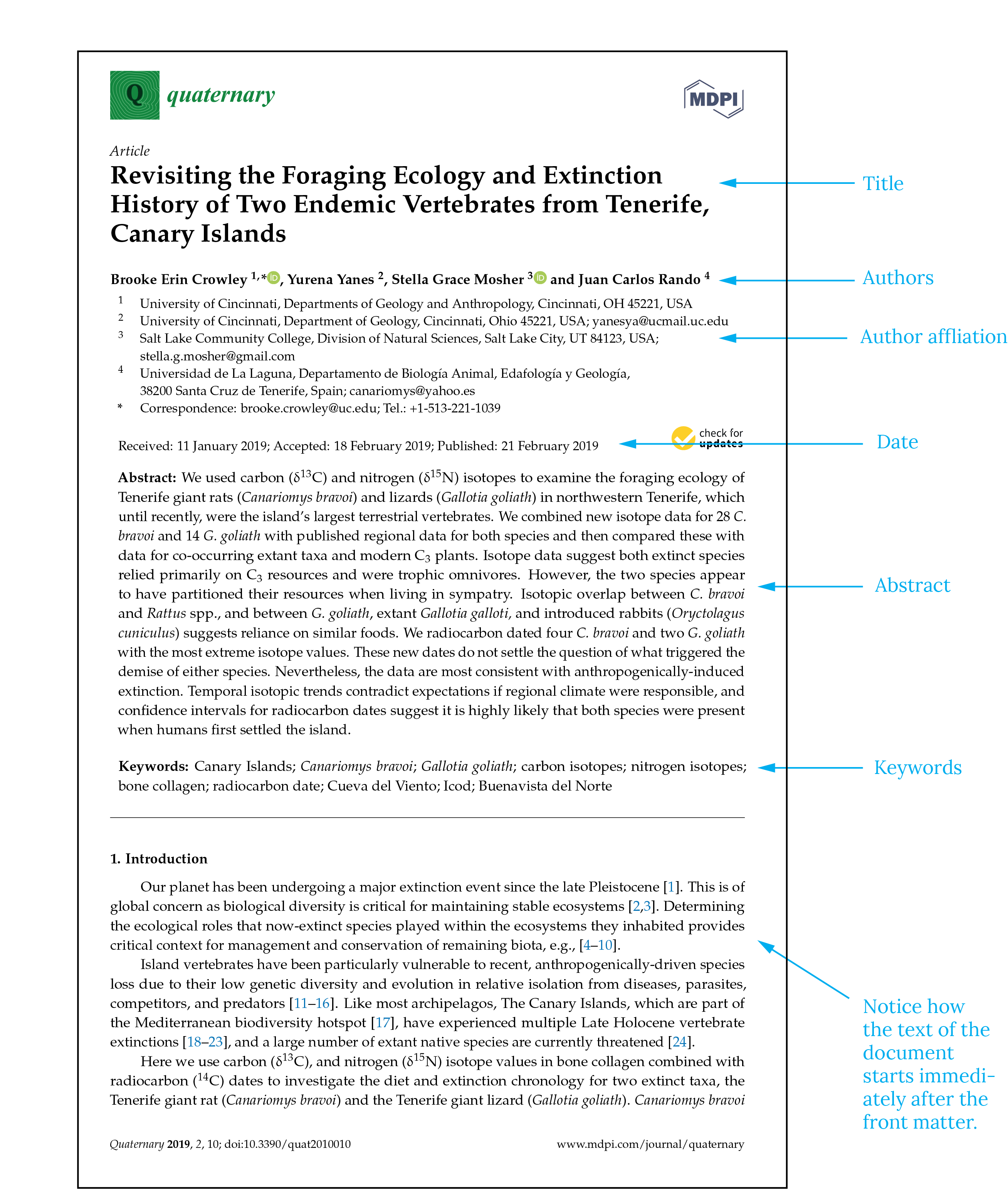2 Front Matter
Front matter is all the information that is placed at the beginning of the document. It includes the title of the document, name of the author(s), and date of publication. See Fig. 2.2 below for an example of front matter.
2.1 Title
Titles are to be concise as possible yet still convey the information to the reader as to the topic of the document. In science titles are straightforward and simply describe the focus of the research or experiment; avoid the poetic or clever. Also avoid acronyms or shortening of scientific terms. Finally avoid roman numerals as they are confusing in searches.
2.2 Author(s)
The byline lists the authors of the article. Sometimes it is an organization, rather than individuals that are listed as responsible for a publication. Often journals also have an author statement located in the back matter that credits the role of each author such as who participated in research, writing, revising, etc.
2.3 Author Affiliation
A document usually also includes institutional affiliation of the author(s) allowing one to contact the author(s).
Writing tip: for your document use your instructor’s name and class. For example: Professor Smith, Biology 1030.
2.4 Date
The date will not always be listed on the article title page as it may have already been listed on the title page of the journal. Sometimes it is found in either the header or footer of the pages in the journal.
Writing tip: for your document always place the date on your title page and it should be the date you submitted your paper.
2.5 Abstract
It is common for all scientific publications to have an abstract. “[A]n abstract should be published with every journal article, essay, and discussion. An abstract helps readers to decide whether the article is of interest; as such, its content must reflect the content of the article as closely as possible, within the length available” (CSE 2014, 4). The abstract helps one make a decision as to whether or not the article is relevant to one’s research, or even one’s general interest. Abstracts generally run between 100 and 250 words although journals may require shorter or longer abstracts. Abstracts generally include purpose, methods, important or key results, and main conclusions.
An article may also request a graphical abstract. It generally consists of a single image and like the written abstract gives the reader a quick overview of the contents of the article. The image may be a diagram or an infographic.
Writing tip: here are some things to consider when writing your abstract:
Do:
- State research objectives
- Explain the “what” and the “why” of the research
- Briefly describe methods
- Summarize important results
- State main conclusions and significance
Don’t:
- Use quotations, references, or figure citations
- Present information not included in the report
- Get bogged down by the details
2.6 Keywords
Often a short list of words is included after the abstract to help readers search for the document. These keywords are descriptors of the main ideas of the document. Generally these are not the same as those used in the title.


